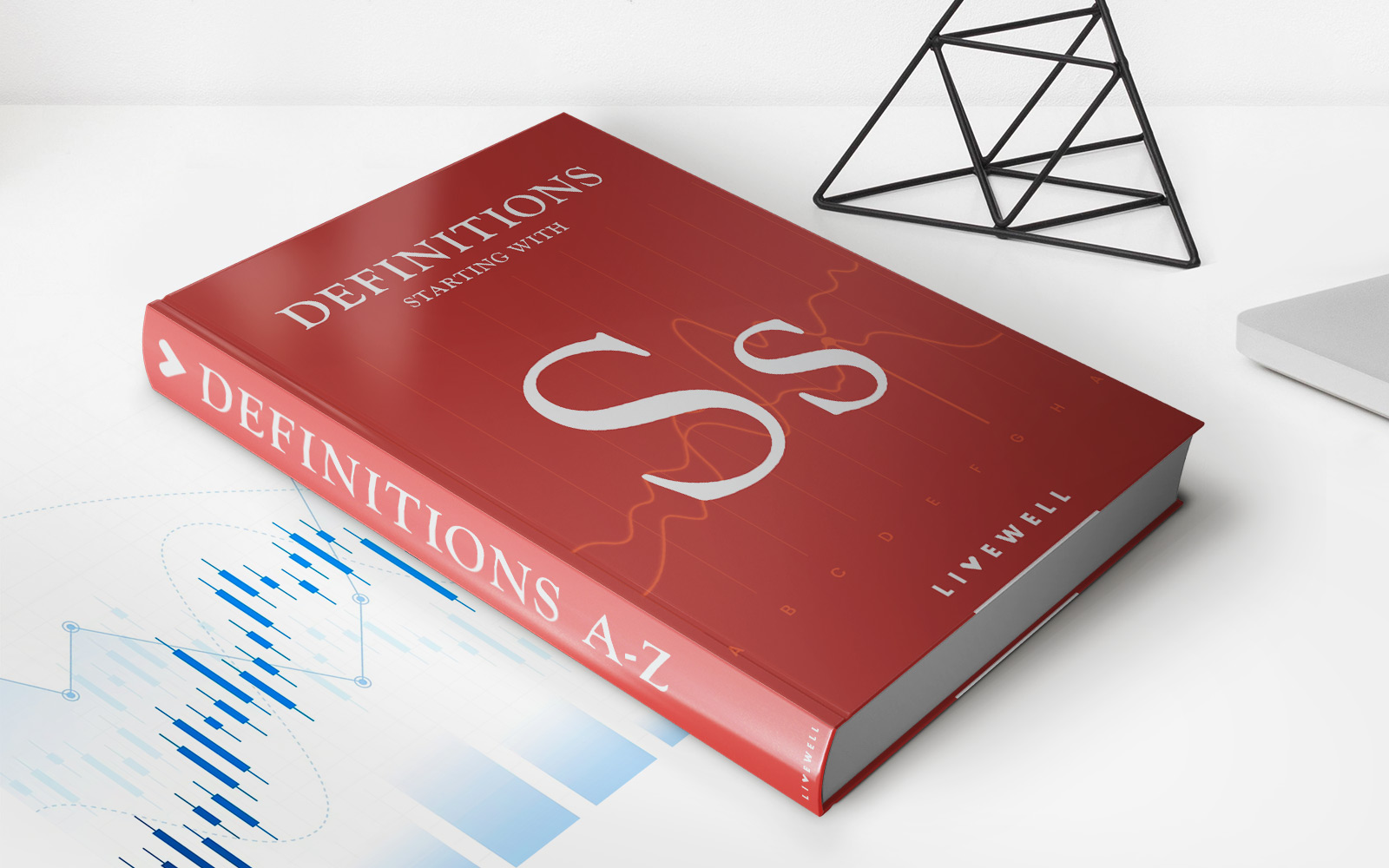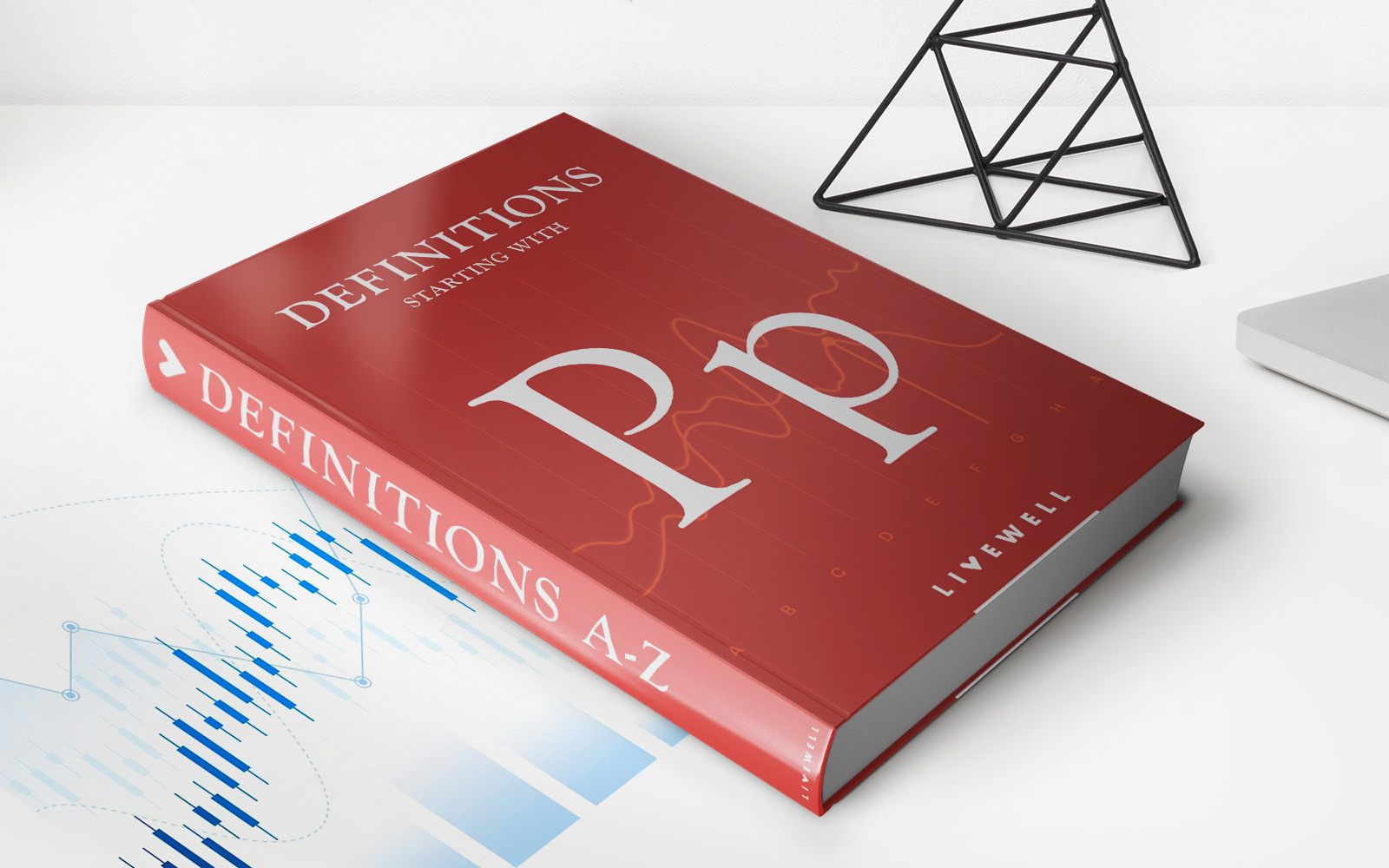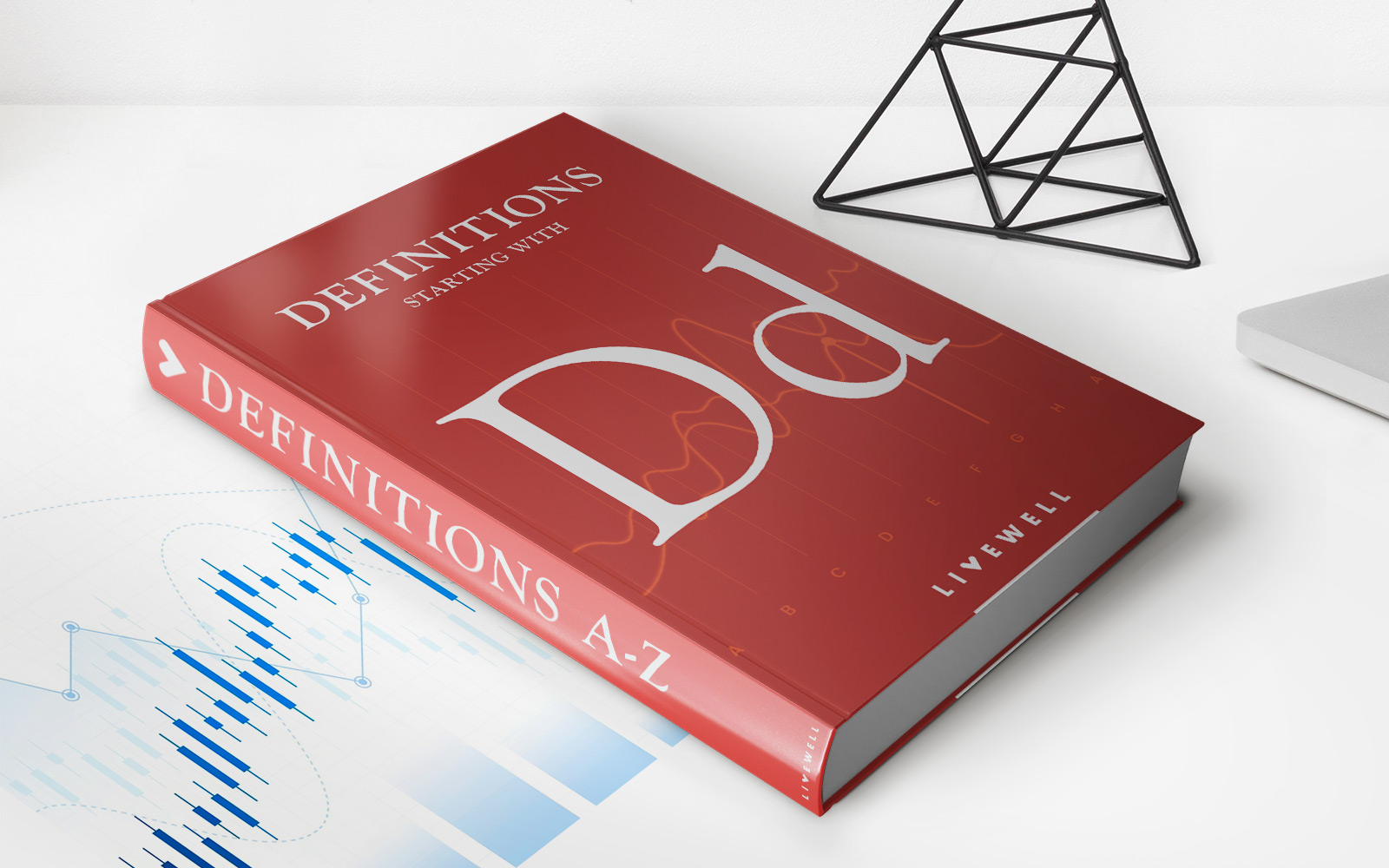

Finance
How To Merge 401K Accounts
Modified: December 30, 2023
Learn how to merge your 401K accounts and streamline your finances with our step-by-step guide. Take control of your retirement savings and optimize your financial future.
(Many of the links in this article redirect to a specific reviewed product. Your purchase of these products through affiliate links helps to generate commission for LiveWell, at no extra cost. Learn more)
Table of Contents
Introduction
Welcome to the world of 401k accounts, where your hard-earned money works for you to secure a comfortable retirement. If you find yourself with multiple 401k accounts scattered across different employers, it might be time to consider merging them into one consolidated account.
Merging 401k accounts offers numerous benefits, such as simplifying your retirement planning, reducing paperwork, and potentially accessing better investment options. However, understanding the process and making informed decisions is crucial to ensure a smooth transition and maximize the advantages.
In this article, we will guide you through the steps of merging 401k accounts and explore the different options available. Whether you are switching jobs, retiring, or simply tidying up your financial portfolio, this information will help you make informed decisions and optimize your retirement savings.
Keep in mind that while we will provide general advice and guidance, it is always recommended to consult with a financial advisor or tax professional who can provide personalized advice tailored to your specific situation. Let’s dive into the details of merging your 401k accounts and start streamlining your retirement savings.
Understanding 401k Accounts
Before we delve into the process of merging 401k accounts, let’s first establish a solid understanding of what a 401k account is and how it works. A 401k account is a retirement savings plan offered by employers as part of their employee benefits package.
One of the key advantages of a 401k account is that it allows you to contribute pre-tax dollars directly from your salary, meaning that you don’t pay income taxes on the money you contribute. This has the dual benefit of reducing your taxable income and allowing your contributions to grow tax-deferred until you withdraw them in retirement.
Most 401k accounts offer a range of investment options, typically including a variety of mutual funds, stocks, and bonds. The investments you choose can have a significant impact on the growth of your retirement savings, so it’s important to carefully consider your options and diversify your portfolio to mitigate risk.
In addition to tax advantages and investment options, many employers offer a matching contribution where they will contribute a certain percentage of your salary to your 401k account. This matching contribution is essentially “free money” and is a great way to supercharge your retirement savings.
It’s important to note that 401k accounts are subject to certain rules and regulations set by the Internal Revenue Service (IRS). For example, there are annual contribution limits, which in 2021 is $19,500 for individuals under the age of 50 and $26,000 for individuals aged 50 and over. These limits are designed to prevent high-income earners from disproportionately benefiting from the tax advantages of 401k accounts.
Now that we have a solid understanding of what a 401k account is and its key features, let’s explore the reasons why you might consider merging multiple accounts.
Reasons to Merge 401k Accounts
As you progress through your career, it’s common to accumulate multiple 401k accounts from different employers. While it may seem convenient to leave them separate and untouched, merging your 401k accounts into a single account can offer several benefits.
1. Simplified Retirement Planning: Managing multiple 401k accounts can be complex and time-consuming. By merging them, you consolidate your retirement savings into one account, making it easier to track your investments, review performance, and adjust your saving and withdrawal strategies accordingly.
2. Consolidated Investment Strategy: Having multiple 401k accounts may result in a scattered investment portfolio with overlapping or conflicting strategies. Consolidating your accounts allows you to develop a cohesive investment strategy based on your risk tolerance, time horizon, and retirement goals. It also provides a clearer overview of your asset allocation and makes rebalancing more efficient.
3. Access to Superior Investment Options: Some 401k plans may offer limited investment choices, restricting your ability to diversify or take advantage of specific investment opportunities. By merging your accounts, you gain the ability to choose from a wider range of investment options, potentially including lower-cost funds and specialized asset classes, giving you more control over your retirement savings.
4. Cost Reduction: Multiple 401k accounts can come with additional administrative and maintenance fees, which can eat into your retirement savings. By consolidating your accounts, you eliminate duplication of fees and potentially reduce overall costs, allowing more of your money to work for you.
5. Easier Withdrawals: When the time comes to start withdrawing funds from your retirement accounts, managing withdrawals from multiple 401k accounts can be cumbersome. By merging your accounts, you streamline the process and simplify the logistics of managing and tracking your withdrawals, ensuring a smoother retirement income strategy.
6. Estate Planning and Beneficiary Designations: Consolidating your 401k accounts can make it easier to manage and update your beneficiary designations. By having a single account, you can ensure that your assets are distributed according to your wishes and minimize potential confusion or complications for your heirs.
While there are compelling reasons to merge your 401k accounts, it’s important to carefully evaluate your individual circumstances and consider the potential implications, such as tax consequences and employer-specific rules. Next, we’ll walk you through the steps to merge your 401k accounts, giving you the tools you need to navigate the process with confidence.
Steps to Merge 401k Accounts
Once you’ve made the decision to merge your 401k accounts, it’s essential to follow a systematic approach to ensure a smooth and efficient process. Here are the steps to merge your 401k accounts:
1. Review Your Existing 401k Accounts: Begin by gathering all the necessary information about your current 401k accounts. This includes their balances, investment options, fees, and any outstanding loans or penalties. Reviewing your accounts will give you a comprehensive understanding of your assets and help you make informed decisions during the merging process.
2. Research and Choose a Consolidation Option: There are two primary methods for merging 401k accounts: direct rollover and indirect rollover. Direct rollover involves transferring funds directly from one 401k account to another, while indirect rollover requires withdrawing the funds from one account and depositing them into the other within a specified time frame. Research the pros and cons of each method to determine which one suits your needs.
3. Understand Tax Implications: Before proceeding with the consolidation, it’s important to consider potential tax consequences. Direct rollovers are generally not subject to taxes or penalties, while indirect rollovers require careful planning to ensure you meet the necessary requirements to avoid taxes and penalties. Consult with a tax professional to fully understand the tax implications and make the best decision for your specific situation.
4. Notify Your Current and Future Employers: If you’re currently employed and plan to merge your 401k accounts into your new employer’s plan, inform both your current and future employers of your intention. They can provide guidance on the process and any necessary paperwork or forms that need to be completed.
5. Complete the Required Paperwork: Depending on the consolidation option you choose, there may be specific paperwork that needs to be completed. This can include transfer forms, beneficiary designation updates, or loan repayment agreements. Ensure that you carefully read and fill out all the required documents accurately to avoid any delays or complications.
6. Monitor the Transfer Process: Once you initiate the transfer of funds, monitor the progress closely. Keep track of the expected timeline for completion and verify that the funds have been transferred successfully. If you encounter any issues or delays, reach out to the respective plan administrators for assistance.
7. Review and Adjust Your Investment Strategy: After successfully merging your 401k accounts, take the opportunity to review your investment strategy. Assess your risk tolerance, time horizon, and retirement goals to ensure that your investment choices align with your objectives. Consider consulting with a financial advisor to optimize your portfolio and maximize your long-term returns.
Remember, merging 401k accounts is a significant financial decision, and it’s essential to carefully evaluate your options and seek professional advice when necessary. Following these steps will help ensure a seamless transition and allow you to reap the benefits of consolidated retirement savings.
Option 1: Direct Rollover
A direct rollover is a straightforward method for merging 401k accounts that involves transferring funds directly from one account to another. This option eliminates the need to handle the funds personally and minimizes the risk of incurring taxes or penalties.
Here’s a step-by-step guide on how to execute a direct rollover:
1. Research and Choose the Receiving Plan: Before initiating a direct rollover, you need to identify the 401k account that will be the recipient of the funds. This can be an existing 401k account with your current employer or an individual retirement account (IRA). Consider factors such as investment options, fees, and account management services when selecting the receiving plan.
2. Contact the Receiving Plan Administrator: Once you’ve chosen the receiving plan, get in touch with the plan administrator to initiate the direct rollover process. They will provide you with the necessary paperwork and instructions for transferring your funds.
3. Complete the Forms: Fill out the required forms provided by the receiving plan administrator. This typically includes a rollover request form, beneficiary designation forms, and any other necessary paperwork. Ensure that all information provided is accurate to prevent any delays or complications in the transfer.
4. Submit the Forms to Your Current Plan Administrator: After completing the required forms, submit them to your current plan administrator. They will process the rollover request and initiate the transfer to the receiving plan. Keep copies of all the forms for your records.
5. Monitor the Transfer Process: Once the forms are submitted, closely monitor the transfer process. Confirm with both the current and receiving plan administrators that the funds have been successfully transferred. It’s essential to ensure that the transaction is completed within the required time frame to avoid any tax implications.
6. Review and Adjust Your Investment Strategy: After the funds have been successfully transferred, review and adjust your investment strategy within the receiving plan. Evaluate the available investment options and allocate your assets according to your risk tolerance and retirement goals. Consider seeking guidance from a financial advisor to optimize your portfolio.
7. Update Beneficiary Designations: Take the opportunity to review and update your beneficiary designations within the receiving plan. Life circumstances change over time, and it’s crucial to ensure that your retirement savings are distributed according to your wishes in the event of your passing.
By choosing a direct rollover, you can streamline the process of merging 401k accounts while maintaining the tax-deferred status of your retirement savings. Be sure to carefully follow the provided instructions and consult with a financial advisor or tax professional if you have any questions or concerns along the way.
Option 2: Indirect Rollover
An indirect rollover is another method for merging 401k accounts that involves withdrawing the funds from one account and then depositing them into another eligible retirement account within a specified time frame. This option requires careful planning to avoid tax implications and penalties.
Here’s a step-by-step guide on how to execute an indirect rollover:
1. Understand the Timeframe and Eligibility: The IRS allows you a 60-day window to complete an indirect rollover. It’s crucial to adhere to this time limit to avoid any taxes or penalties. Furthermore, ensure that the receiving account, such as an IRA, is eligible to receive the funds.
2. Initiate a Distribution from Your Current 401k Account: Contact the administrator of your current 401k account and request a distribution or withdrawal form. Specify that you want to do an indirect rollover and obtain the necessary instructions and paperwork to facilitate the process.
3. Receive the Distribution Check: Once the distribution form is processed, you will receive a check for the amount requested. It’s important to note that the distribution will be subject to a mandatory 20% withholding for federal taxes. However, to avoid tax consequences, make sure to deposit the full amount of the distribution, including the withheld amount, into the receiving account.
4. Deposit the Funds into the Receiving Account: Within the 60-day timeframe, deposit the distribution check into the eligible receiving account (e.g., an IRA). Ensure that the check is made payable to the receiving account to avoid any personal tax liability.
5. Report the Distribution and Rollover: When filing your taxes for the year in which the indirect rollover occurred, you’ll need to report the distribution from your 401k account. The 20% withholding will also be indicated, and you can claim it as a credit against any taxes owed.
6. Review and Adjust Your Investment Strategy: Once the funds are successfully deposited into the receiving account, review and adjust your investment strategy. Evaluate the available investment options within the account and rebalance your portfolio as needed to align with your retirement goals and risk tolerance.
7. Update Beneficiary Designations: Take this opportunity to review and update beneficiary designations within the receiving account. Ensure that your retirement savings will be distributed according to your wishes in the event of your passing.
It’s important to carefully consider the implications of an indirect rollover, such as the tax withholding and the time-sensitive nature of the process. If you’re unsure about any aspect of an indirect rollover, consult with a financial advisor or tax professional to ensure compliance with IRS regulations and to make the best decision based on your specific circumstances.
Considerations Before Merging 401k Accounts
Merging 401k accounts can be a beneficial strategy for consolidating and optimizing your retirement savings. However, before taking the plunge, it’s important to consider several key factors to ensure that the merger aligns with your financial goals and minimizes any potential drawbacks.
Here are some considerations to keep in mind before merging your 401k accounts:
1. Investment Options: Evaluate the investment options available in your current 401k accounts and the receiving account. Compare the fund choices, fees, and performance histories to ensure that the consolidated account will provide a diverse and suitable investment selection that aligns with your risk tolerance and long-term goals.
2. Employer Match and Benefits: If your current employer offers a matching contribution to your 401k, take into account whether the receiving plan also offers a match. Consider the potential impact on your retirement savings if you transfer out of a plan with a generous match. Additionally, assess any other employer-specific benefits or features that you may lose by merging accounts.
3. Vesting Schedule: Consider the vesting schedule of your current 401k accounts. Vesting refers to the terms set by your employer that dictate how long you must be employed before you are entitled to the full ownership of employer contributions. If you have unvested funds in any of your accounts, merging them may result in forfeiting those funds.
4. Loan Repayment: If you have outstanding loans from your 401k accounts, merging them will require careful management of loan repayment. Determine whether the receiving plan allows for transferring and continuing the loan repayment or if you need to repay the loans before initiating the merger.
5. Company Stock: If your 401k accounts include company stock, consider the tax implications and potential restrictions on transferring company stock to the receiving account. Different plan rules and tax regulations may govern the transfer of company shares, so it’s important to be aware of any limitations or potential tax consequences.
6. Tax Considerations: Evaluate the potential tax implications of merging your 401k accounts. Direct rollovers typically do not trigger taxes or penalties, while indirect rollovers require adherence to specific rules and timelines to avoid tax consequences. Consult with a tax professional to fully understand the tax implications and make informed decisions.
7. Administrative and Maintenance Fees: Compare the administrative and maintenance fees associated with each of your 401k accounts. Merging your accounts into a single plan can potentially reduce the overall costs and fees you incur. Ensure that the receiving plan offers competitive fee structures and consider the impact on your long-term retirement savings.
By considering these factors and conducting thorough research, you can make an informed decision about merging your 401k accounts that aligns with your financial goals and ensures a streamlined approach to managing your retirement savings. Consulting with a financial advisor can also provide valuable insights and guidance tailored to your specific needs.
Potential Challenges and Solutions
While merging 401k accounts can offer numerous benefits, it’s important to be aware of potential challenges that may arise during the process. By understanding these challenges, you can be better prepared and find solutions to ensure a smooth merger of your accounts.
Here are some potential challenges you may encounter when merging your 401k accounts, along with corresponding solutions:
1. Plan Restrictions: Different 401k plans may have varying rules and restrictions on transfers. Some plans may limit the frequency or type of transfers allowed. Solution: Before initiating the merger, carefully review the plan documents and contact the plan administrators to understand any limitations and ensure compliance with the rules.
2. Coordination with Multiple Plan Administrators: If you have multiple 401k accounts from different employers, you will need to coordinate with each plan administrator to ensure seamless transfers. Solution: Maintain open lines of communication with all plan administrators, promptly respond to any requests or inquiries, and ensure that all necessary paperwork is completed accurately and submitted on time.
3. Timing and Processing Delays: Processing transfers between 401k accounts can sometimes take longer than anticipated, potentially resulting in delays. Solution: Monitor the transfer process closely and follow up with the plan administrators if there are any unexpected delays. Stay in communication with both the sending and receiving plan administrators to ensure a timely completion of the transfer.
4. Tax Consequences: Depending on the type of transfer and the timeline involved, there may be potential tax implications, such as taxes on indirect rollovers or early withdrawal penalties. Solution: Consult with a tax professional to fully understand the tax consequences of merging your 401k accounts. They can help you navigate the process and identify strategies to minimize tax liabilities.
5. Investment Strategy Alignment: When merging multiple accounts, it’s crucial to ensure that the investment strategies align and work cohesively together. Solution: Evaluate the investment options within the receiving account and compare them with your current accounts. Rebalance and adjust your investment allocations as necessary to ensure a diversified and aligned portfolio that matches your risk tolerance and retirement goals.
6. Lost Employer-Specific Benefits: Merging accounts may result in the loss of certain employer-specific benefits, such as company stock programs or unique matching contributions. Solution: Evaluate the potential impact of losing these benefits and weigh them against the advantages of consolidation. Consider factors such as the overall investment options, fees, and potential future employer contributions to make an informed decision.
7. Communication with Financial Advisors: If you work with a financial advisor, it’s important to keep them informed about your plans to merge your 401k accounts. Solution: Schedule a meeting or call with your financial advisor to discuss your intentions and seek their advice on the best course of action. They can provide personalized guidance based on your specific financial situation and goals.
By anticipating these potential challenges and implementing the corresponding solutions, you can navigate the process of merging your 401k accounts more effectively. Remember that seeking professional advice from financial advisors, tax professionals, or plan administrators can provide customized guidance and ensure a successful merger.
Benefits of Merging 401k Accounts
Merging your 401k accounts can provide numerous benefits that can positively impact your retirement savings and overall financial well-being. By consolidating your accounts into a single, streamlined account, you can experience the following advantages:
1. Simplified Retirement Planning: Managing multiple 401k accounts can be complex and time-consuming. By merging them, you consolidate your retirement savings into one account, making it easier to track your investments, review performance, and adjust your saving and withdrawal strategies accordingly. This streamlines your retirement planning process and provides a clearer overview of your finances.
2. Enhanced Investment Strategy: Having multiple 401k accounts may result in a scattered investment portfolio with overlapping or conflicting strategies. Through consolidation, you can develop a cohesive investment strategy based on your risk tolerance, time horizon, and retirement goals. It also enables you to better evaluate your asset allocation and make informed decisions for optimizing investment returns.
3. Access to Superior Investment Options: Some 401k plans may offer limited investment choices, restricting your ability to diversify or take advantage of specific investment opportunities. By merging your accounts, you gain access to a wider range of investment options. This can include lower-cost funds, specialized asset classes, and choices with more favorable historical performance, enabling you to build a stronger and more diversified portfolio.
4. Cost Reduction: Multiple 401k accounts can come with additional administrative and maintenance fees, which can eat into your retirement savings over time. By consolidating your accounts, you eliminate duplication of fees and potentially reduce your overall costs. This allows more of your hard-earned money to work for you and grow your wealth.
5. Easier Management of Withdrawals: When the time comes to start withdrawing funds from your retirement accounts, managing withdrawals from multiple 401k accounts can be cumbersome. By merging your accounts into one, you streamline the process and simplify the logistics of managing and tracking your withdrawals. This ensures a smoother and more efficient retirement income strategy.
6. Enhanced Estate Planning: Consolidating your 401k accounts can make it easier to manage and update your beneficiary designations. By having a single account, you can ensure that your assets are distributed according to your wishes. This simplifies your estate planning process, minimizes potential confusion or complications for your heirs, and provides greater peace of mind.
7. Improved Financial Visibility: Merging your 401k accounts gives you a comprehensive and consolidated view of your retirement savings. This improved visibility allows for better financial planning, goal setting, and tracking of progress towards your retirement objectives. It also simplifies financial reporting and allows for more accurate financial analysis.
By consolidating your 401k accounts, you can experience the benefits of streamlined retirement planning, improved investment strategy, cost reduction, ease of fund withdrawals, and enhanced estate planning. Moreover, it provides you with a clearer financial picture and greater control over your retirement savings. Always consult with a financial advisor to tailor these benefits to your specific situation and ensure you make the best decision for your long-term financial goals.
Conclusion
Merging your 401k accounts is a strategic move that offers numerous benefits for your retirement planning and financial well-being. By consolidating your accounts, you simplify your retirement strategy, gain access to superior investment options, reduce costs, and streamline the management of your funds.
Throughout this article, we’ve explored the steps to merge your 401k accounts, including options like direct rollovers and indirect rollovers. We’ve also discussed the considerations before merging, potential challenges, and solutions to overcome them. It’s important to carefully evaluate factors such as investment options, taxes, employer-specific benefits, and administrative fees before making a decision.
Remember that merging 401k accounts requires thoughtful planning and consideration of your unique financial circumstances. It’s always recommended to consult with a financial advisor or tax professional to ensure compliance with regulations and to receive personalized advice tailored to your needs.
By merging your 401k accounts, you streamline your retirement planning, simplify your investment strategy, and potentially reduce costs. You also gain the opportunity to optimize your investment selections and improve your overall financial visibility. Consolidating your accounts is a proactive step towards maximizing your retirement savings and achieving your long-term financial goals.
Take control of your retirement by merging your 401k accounts into a single, well-managed account. Start the process today and set the stage for a more organized and efficient approach to managing your retirement savings. With careful planning and the right guidance, you can pave the way for a comfortable and financially secure future.














